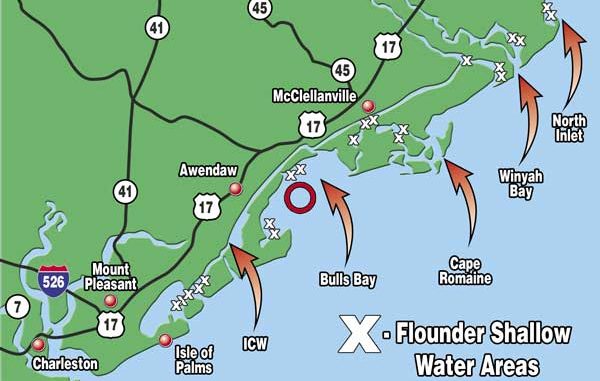
Super shallows can be great spots for summer flounder with a little observation and preparation.
For the next few months, one of the most popular and productive inshore fisheries will be the fabulous flounder.Fishing will be excellent up and down the coast, but the area from Charleston to Georgetown certainly ranks among the best. The many winding rivers, creeks — and even the shallow flats and sand bars — will be loaded with this feisty fish, a favorite target among saltwater anglers.
But based on one expert’s advice, most anglers will be fishing far too deep to score the limit catches of big flounder that are possible.
Capt. John Lowder has been a flounder fanatic for most of his life. He operates Nite Ranger Charters, a flounder-gigging guide service (see www.Nite-RangerCharters.com or call 843-206-7633). However, his prowess in catching flounder with rod and reel is equal to his gigging ability. Lowder said it is the knowledge of the flounder and its feeding habits that enables him to consistently score limits — regardless of how he pursues them.
Lowder said that to enjoy the absolute best rod-and-reel fishing anglers need to focus on shallow water — real shallow water.
“From mid-May on through the summer, flounder will be piled into our inshore waters,” Lowder said. “Through many years of fishing, I’ve learned a number of lessons on how to catch them. The No. 1 lesson is that the best way to take a limit of flounder is to fish very shallow water, usually less than a foot deep.
“This will surprise a lot of people,” he said. “I almost never see anyone fishing this way. But those that primarily fish the very shallow water enjoy remarkable success. The flounder that are in the shallow water are there for one reason only: they are there to eat. If I find places where the fish are located and present the bait properly without spooking the fish, odds are extremely high I’ll get a good, solid bite. Repeat that process several times, and before you know it, you’ve got a limit of fish.”
Lowder said that fishing the shallows during daylight hours presents some challenges. But with a good strategy and proper lure or bait presentation, those potential issues can be easily overcome.
“At night, when I’m gigging, flounder are not as spooky as they are during the daytime,” Lowder said. “One key to success is to ensure that while you fish shallow, you don’t get the boat in real close and bump and drag along the shells beds or even the sand or mud. You’ll see the wake and mud trail of a fish scurrying out of the shallows if you get too noisy.”
Lowder catches fish on either tide, but he prefers the rising tide for a couple of reasons.
“Actually, my overall favorite is the rising tide early in the morning,” he said. “The sunlight is still low, which helps in terms of (not) spooking the fish. With a rising tide, the flounder will be constantly repositioning to stay close to the edge of the water. The rising water keeps them in a shallow-water strike zone better, in my opinion. But I’ve done extremely well on the dropping tide, too.
“The reason the flounder are in the very shallow water is because that’s where the ‘bait path’ will be,” Lowder said. “This is the first step to shallow-water success.
“Most anyone who fishes saltwater has seen what I refer to as the ’bait path,’ but they may not be aware of what they’re actually seeing and how it impacts flounder fishing. A bait path is literally the area near the shoreline where the bait moves in a concentrated area. They move in the direction of the water flow, and they will hug the edgeline of the water to avoid the middle of the creeks where the larger gamefish are. There is only one predator fish that gets into and stays in this very shallow water — that’s the flounder. The flounder will face into the current to ambush the forage as it moves along with the current.”
Lowder said experience has shown him that a flounder’s primary forage will include finger mullet, silversides and spot. He bases that information on examining the stomach contents of fish he has caught.
“For bait, I’ll usually rely on the same type live bait that the flounder are feeding on,” he said. “By watching the bait path, you can use a cast net to catch your own bait, and you’ll know that it is the bait on which the flounder are foraging in that area.”
Lowder said that other baits, including mud minnows, can usually be purchased at tackle shops and will also work well. He also likes to use small jigs as well as topwater lures: MirrOLures or a floating Rapala. Use a lure similar to the size of the baitfish in the bait path, he said.
“There are a couple of key components to this style of fishing,” he said. “First, since you are fishing very shallow water, you have to be careful not to spook the fish. Second, you will almost always have to be moving around a lot to catch a limit of fish.
“I look for areas along the grass or edgelines where the bait path is moving that offers a flounder an ideal setup for an ambush. A small, shallow shell point is a classic-type place. The intersection of a small feeder creek into a larger creek is ideal. Sometimes, there will be a long stretch of shore with a shell and sand bottom where several founder may be lying in wait. Target a potential hotspot and anchor the boat so you can cast to it effectively without getting in too close.
“Another tactic I use a lot that is different from most flounder fishermen is, I actually get out on the shoreline,” Lowder said. “I’ll quietly pull the boat onto the bank and literally stalk the places I intend to fish. I crouch low and ensure that I’m in a position where my shadow isn’t on the water. I can cover three or four spots in close proximity very quickly. Usually, if there is a flounder where you’re fishing, the action will usually occur immediately. Remember, they are there to feed.”
Lowder uses different rigs, but one of his favorites is a simple float rig about two feet above a No. 4 Kahle hook. He’ll use just enough weight to keep the bait near the bottom, then cast the rig upstream of his target and allow the rig to drift naturally over the area.
“Watch the float, and when it suddenly stops and moves toward deeper water, you’ll know a flounder has it,” he said. “Set the hook then. When fishing deeper water, anglers will often need to let a flounder run with the bait. But in the shallows, using live bait is basically like using artificial lures. When the bite occurs, the flounder usually has the bait, and you can set the hook.”
Lowder also says that as the tide rises, or falls, the specific places where flounder are accessible will change quickly. After fishing an area where there is tidal current over prime structure, the water will soon be at a depth where it is not as productive. When this occurs, it’s time to move to another area, quickly and quietly.
“This system does require effort,” Lowder said. “When I first began fishing the ultra-shallow water, I had just a few areas in mind where I could try it. But through trial and error, and persistence, over a few trips I learned the area well enough so I discovered more and more productive places. I kept notes on what stage of the tide was best for certain areas. Before long, I had dozens of areas, and I knew the stage of the tide when I needed to be at each one to fish.
“Whether successful or not at an individual area, I fish the place, and then move to the next potential hotspot,” he said. “As the water level changes, some areas are getting better, while others fade in terms of productivity. Keep moving to those productive areas that are just reaching the right water level. On a rising tide, you’ll often be moving further back in the creeks to fish new areas that are potentially holding feeding flounder.”
Another shallow-water flounder addict is Cheryl Stevenson of Columbia, who does most of her fishing from the shoreline.
“It is important to keep a low profile when fishing shallow water, especially from the shoreline,” Stevenson said. “Early and late in the day — and especially cloudy days — are my favorite times. The cloudy days basically eliminate the shadows and enable me to fish a variety of areas more effectively.
“Fishing from the bank seems to enable me to have more control of the bait in shallow water,” she said. “Presentation of the bait in the right spot is a real key to shallow-water, flounder-fishing success.
Stevenson will also work the mid-depths as the tide rises, especially if she has only a limited amount of time to fish.
“Sometimes I will fish in just one general area, and while the shallow-water action is something I will key on, I won’t ignore the slightly deeper water. While I continue to fish the rig through the shallows, I’ll sometimes add a bit more weight and allow the rig to work underwater points, bars and shell beds in several feet of water. Sometimes, other gamefish, such as redfish, will load on when I’m working the deeper water, but that’s okay, too.”
Stevenson uses a rig with a small float on the leader about a foot up from the hook, and mud minnow, her preferred bait. The float keeps the bait just off the bottom and more visible to the flounder — and less likely to snag, she said. She places a sliding, cylindrical sinker above the swivel. She’ll change the size of the sinker to match the current and the depth she is fishing.
Lowder summarizes his shallow-water flounder fishing technique with some interesting observations.
“Flounder fishing in shallow water is productive because flounder are quite predictable,” he said. “Find a good bottom substrate and ambush point, locate the bait path, and a feeding flounder is likely to be there. Fish a general area a few times, and by trial and error, you’ll learn a number of productive places at different stages of the tide. Before long, you’ll expect to catch flounder in good numbers and sizes.
“Another thing I do that helps me find the areas is to look around the sand bars and flats at low tide to scout where flounder are bedding,” Lowder said. “The bed of a flounder looks exactly like the fish in shape. The direction the bed is facing, in relationship to how the current flows across the area, can give you an indication whether the fish was there on a rising or falling tide and when the water depth is right for this style of fishing.
“Many times, I’ve observed beds while scouting. Then, on the next tide, when the water level was right, I’d catch flounder off that spot and add it to my list of stops on my ‘must hit’ list.”
Lower said the overriding key to success is to understand your quarry.
“Learn the biology of the fish. If fishing for flounder learn what makes the fish tick,” he said. “Where does it eat? What type of habitat does it prefer? How does it feed? Flounder are not a grazing-type feeder; they are an ambush feeder. Use that as a tool to ambush this predator.”
Lowder said he’ll fish every chance he gets, but over time he’s learned that this tactic works best on the first and last quarter of the moon phases, because the current flow is weaker. Thus, he can fish specific hotspots just a bit longer before moving to the next spot.

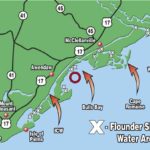
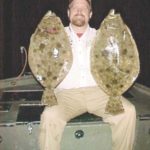
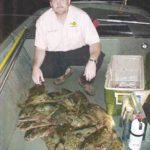

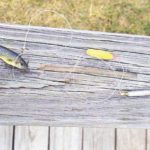
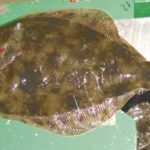



Be the first to comment